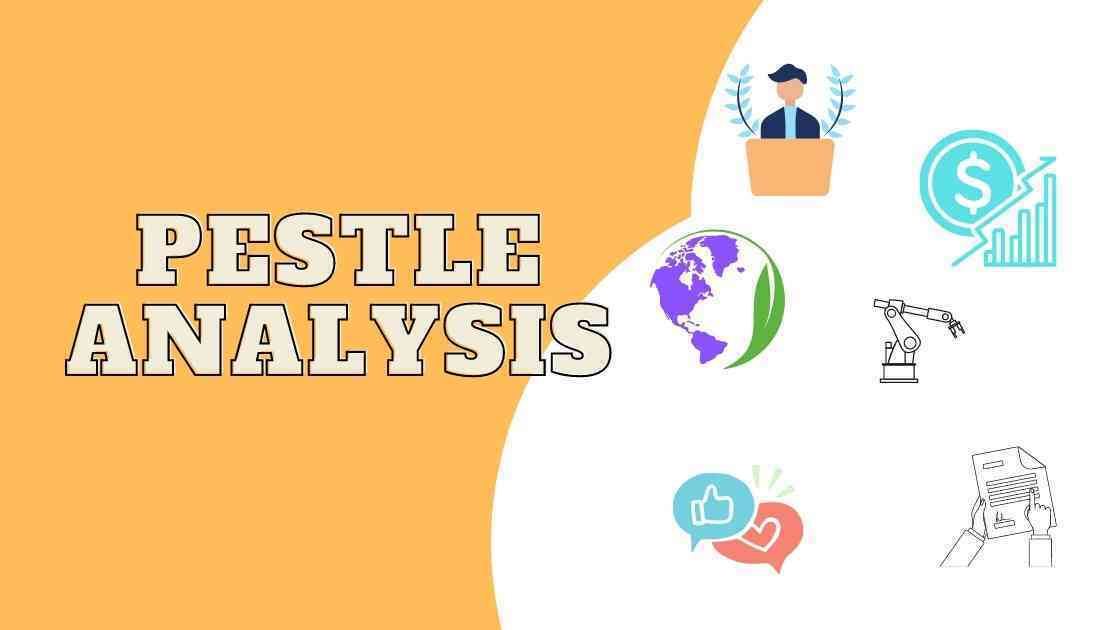A PESTLE Analysis is a technique employed by business analysis to identify the most influential forces impacting their particular industry, which can then be used to guide strategic decisions. This is a simple technique of asking a series of questions, and building an understanding about the most influential factors in an industry.
PESTLE analysis is a good starting point to try to understand the customer. A more detailed approach can be useful when looking at trends or predictions. The trend-based PESTLE chart below shows how demand for new products has shifted over time.
In this blog article we will walk you through the basics of PESTLE Analysis before discussing its more practical uses.
What is PESTLE Analysis?
The PESTLE analysis is a tool used by business analysts to understand the drivers of a business. PESTLE stands for Political, Economic, Social, Technological, Legal and Environmental.
When analyzing a business, PESTLE analysis will help you understand the affecting elements of your industry, and in turn, your competitors.
Why You Should Use PESTLE Analysis?
- PESTLE analysis gives you an idea of market dynamics that affect the sales and profits of a business. If you are new to the world of business, using the PESTLE analysis can be challenging; however, it is an invaluable tool.
- PESTLE analysis will help you understand the ins and outs of the Industry and organization. In addition to giving a general idea of how your business will fare, PESTLE analysis will help you navigate the market to determine what areas of the industry need improvement.
- The PESTLE Analysis is not just for large companies – it can be applied to any company that is considering expansion or plans on going public.
For example, If a small retail store wants to grow, they should consider the positive and negative aspects of their industry, as well as their competitors. How would an analysis by PESTLE affect their business? By using the PESTLE Analysis, you can reflect on your business and industry as a whole and determine how changes in the market will affect your company.
- If you are considering expansion into new markets or need help determining how to best position yourself in your current market, the PESTLE Analysis can be used to make important decisions regarding your growth strategy.
However, with so many drivers at play in a business, it can sometimes be difficult to keep up with all the factors that are changing.
Factors of PESTLE Analysis
The PESTLE analysis is a tool that can be used to look at the drivers of a business. The acronym stands for Political, Economic, Social, Technological, Legal and Environmental. Each factor can have a significant impact on a company’s performance.
- Political Factors
Political Factors includes economic stability, taxation, regulation, and legislation. A good political environment can help attract investment and encourage growth. A strong political leadership can help guide company policy and set the tone for the industry. They can also provide support during difficult times.
A country or region with stable politics is generally more hospitable to businesses. This means less interference from government officials and less risk of instability affecting the economy.
- Economic Factors
Economic Factors includes overall GDP growth, inflation rates, interest rates, and unemployment levels. Changes in these factors can have a significant impact on business performance.
Economic infrastructure such as ports, airports, highways, and telecommunications networks. These assets play an important role in facilitating trade and commerce.
A country that cannot produce goods at a competitive price is unlikely to be successful in attracting private sector capital. Also, a country that does not allow businesses to function freely is unlikely to attract investment or business activity.
- Social Factors
Social factors also play an important role to understand the stand point of the industry or company in a country. Social aspects include a country’s government, institutions, and culture. These factors influence economic decisions such as the type of policies adopted by governments, how effective they are at providing basic services to its citizens, and what types of industries are supported by policies.
For example, McDonald’s sells beef and pork burgers in United States but looking at the environmental and religious influence in India, McDonald’s created vegetarian burger menu and used chicken instead of beef and pork in their burgers to capture the market in India.
- Technological Factors.
Technological factors include the availability of technical skills in human capital and management talent in an economy as well as the availability of technology such as transportation systems, communications infrastructure and telecommunication services. Economies that embrace technological change and investment are tend to be more productive, while economies that do not are less productive
- Legal Factors
Legal factors include legal frameworks and regulatory policies that influence economic growth. Legal factors are important for long-term economic stability since they create the environment for economic activities and provide the foundation for building a sound legal infrastructure.
Legal frameworks in many countries are highly fragmented, with conflicting laws affecting business transactions and associated costs. In addition, government regulations can include barriers to entry of businesses in the industry.
- Environmental Factors
Environmental factors include all those that influence or are determined by the surrounding environment. Environmental factors have a major influence on the environment of an economy and can include such things as climatic conditions (temperature, precipitation, flooding, wind and oceanic tremor), weather patterns (winds, rainfall), extreme temperatures (heat and cold), and natural disasters.
However, environmental factors are not limited to weather and climate of a country but the surrounding influence it carries.
How to Conduct a PESTLE Analysis
PESTLE analysis is a tool for understanding the drivers of a business. It can help you identify where opportunities and threats exist, and what needs to be done to address them.
Here’s how to conduct a PESTLE analysis:
# Step 1
Identify your business’s four core values. What is at the heart of your company? What are your priorities?
# Step 2
Assess how well your company upholds each of its core values. Are they being put into practice throughout the organization? Are there areas where they’re not being followed closely enough?
# Step 3
Look at your business’s competitive landscape. Who are your main rivals, and what are their strengths and weaknesses? Do you have any advantages over them? If not, what needs to be done to strengthen your position?
# Step 4
Analyze your company’s financial performance. What has driven it in the past? What will continue to drive it in the future? What challenges does this pose for you?
Pros and Cons of a Business With a PESTLE Analysis
When it comes to analyzing a business, there are many ways to look at the drivers of success. The PESTLE analysis is one tool that can be used to evaluate a business. The PESTLE analysis is an acronym for: Product, Economic, Social, Technological, Legal and Environmental.
Pros of PESTLE Analysis:
- The PESTLE analysis helps to identify the underlying factors that contribute to a company’s success or failure.
- The PESTLE analysis can be helpful in assessing a business’s strengths and weaknesses. It can help identify which areas need improvement and which areas are doing well.
- The PESTLE analysis can also help to determine which areas are most important to focus on when developing strategy for a business.
- The PESTLE analysis can be used in a number of different ways. For example, it can be used to assess how well a company is performing relative to its competitors.
- The PESTLE analysis can also be used to determine which areas of the company need more attention.
In general, it is a good way for companies to gauge whether or not they are successful in their relevant area of the company.
Cons of PESTLE Analysis:
Though PESTLE Analysis is effective and provide benefits for the businesses, it however have some drawback as well.
Following are some of the Cons of PESTLE Analysis:
- PESTLE analysis can be time-consuming and may not provide all the necessary information for making informed decisions.
- The analysis can be expensive, and not always accurate.
- The strategy used to arrive at a PESTLE score may not be the most effective one for a given business.
- PESTLE analysis can create anxiety in executives and managers, as they worry that their business is at risk of failure.
However, this does not mean that an organization should never conduct a PESTLE analysis, because although it has some drawbacks, but the benefits of environmental analysis are much greater.




